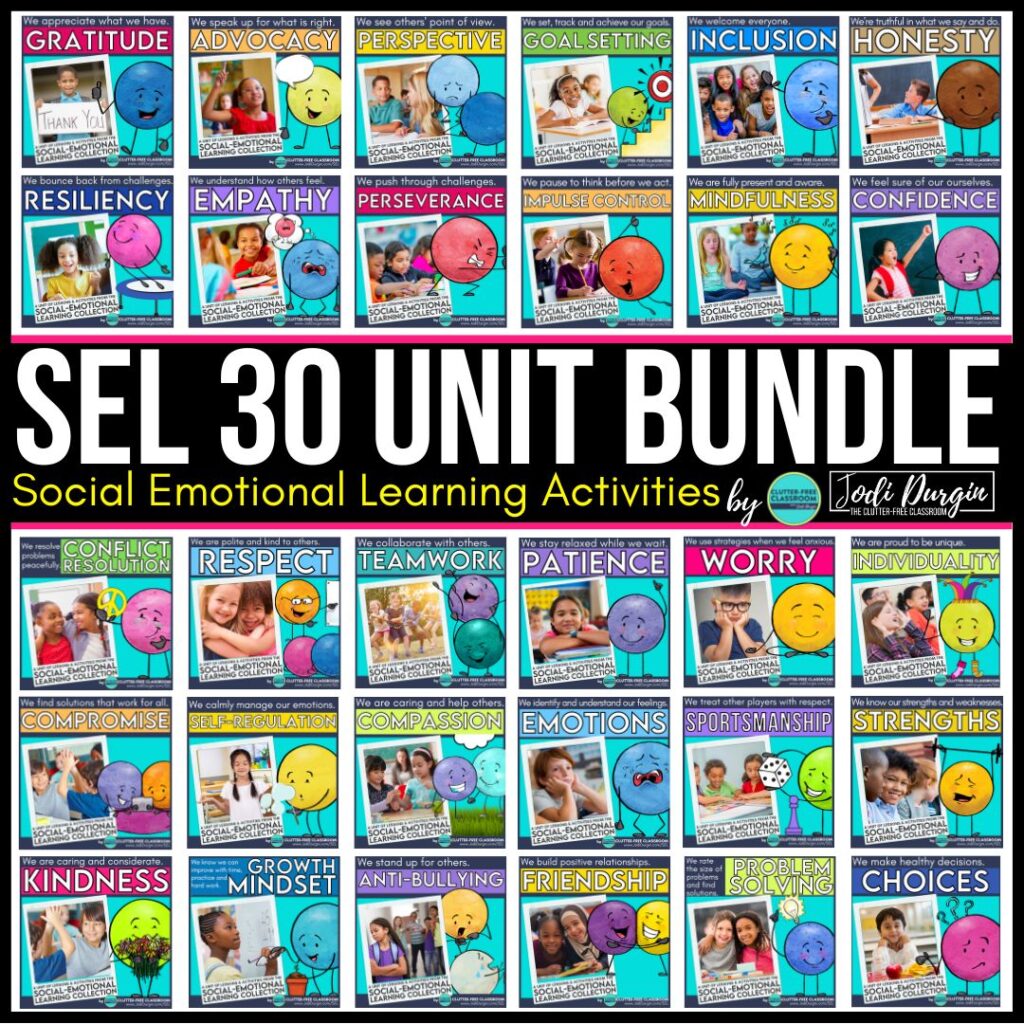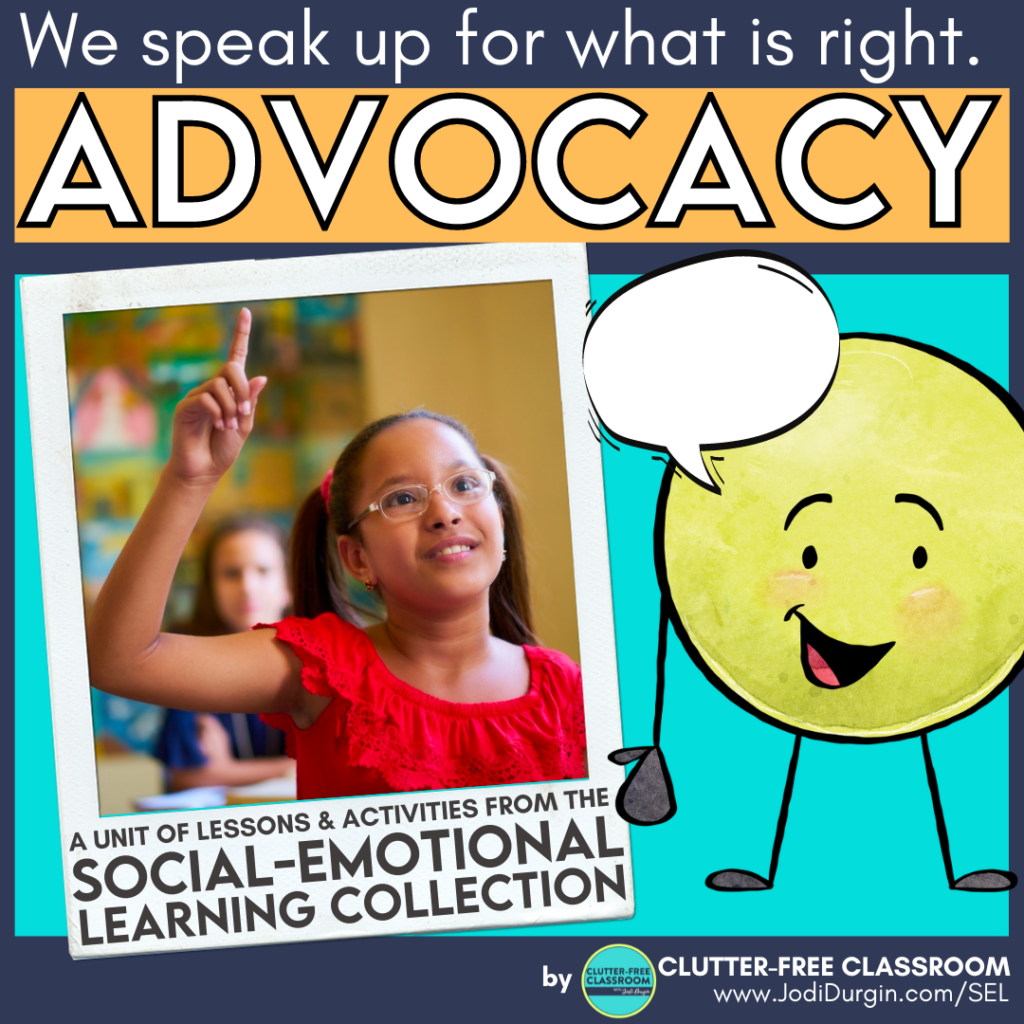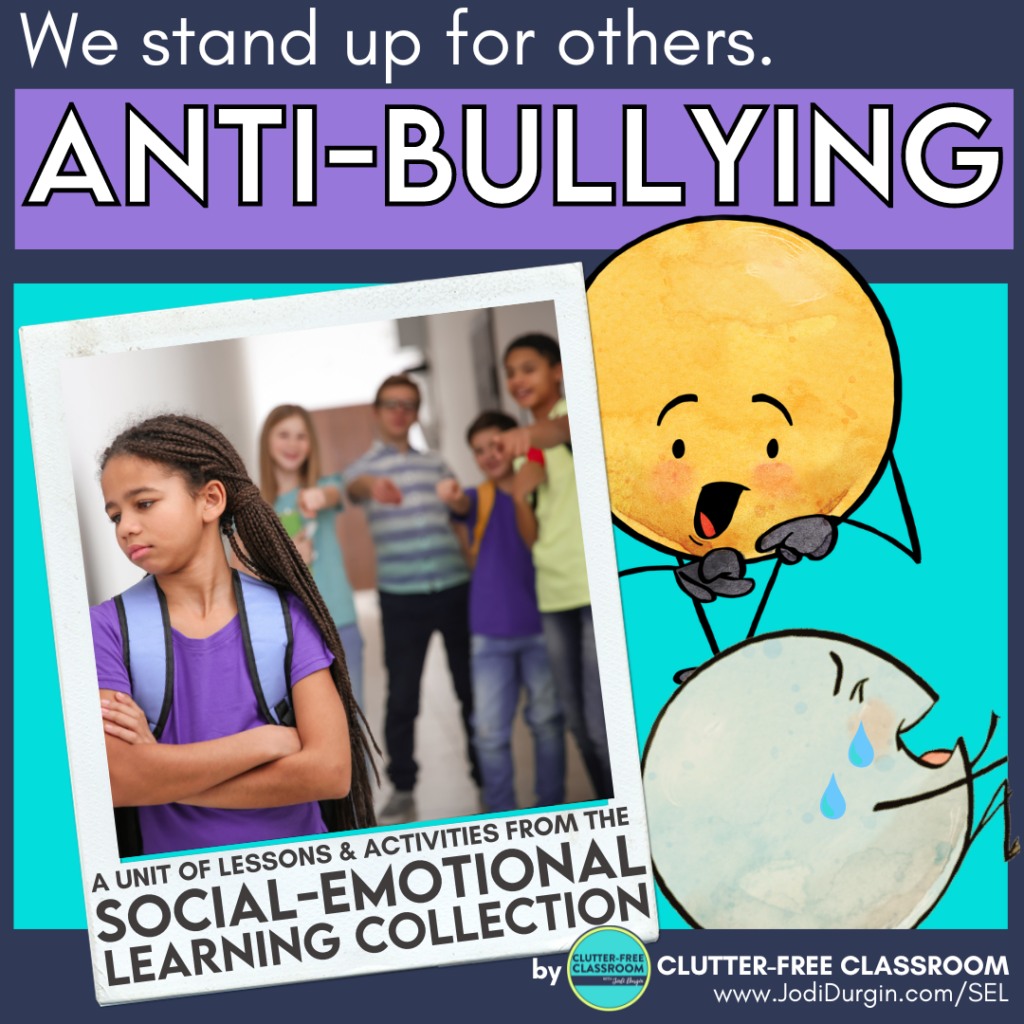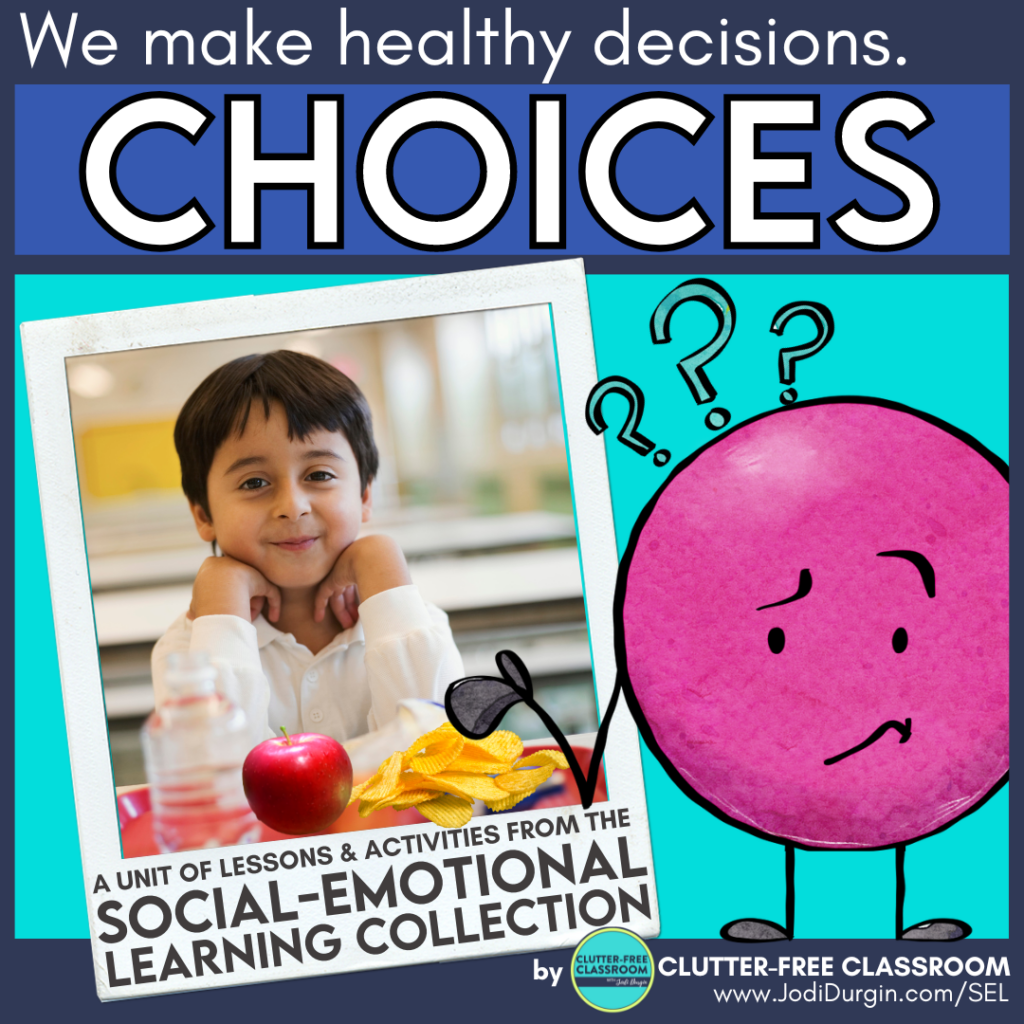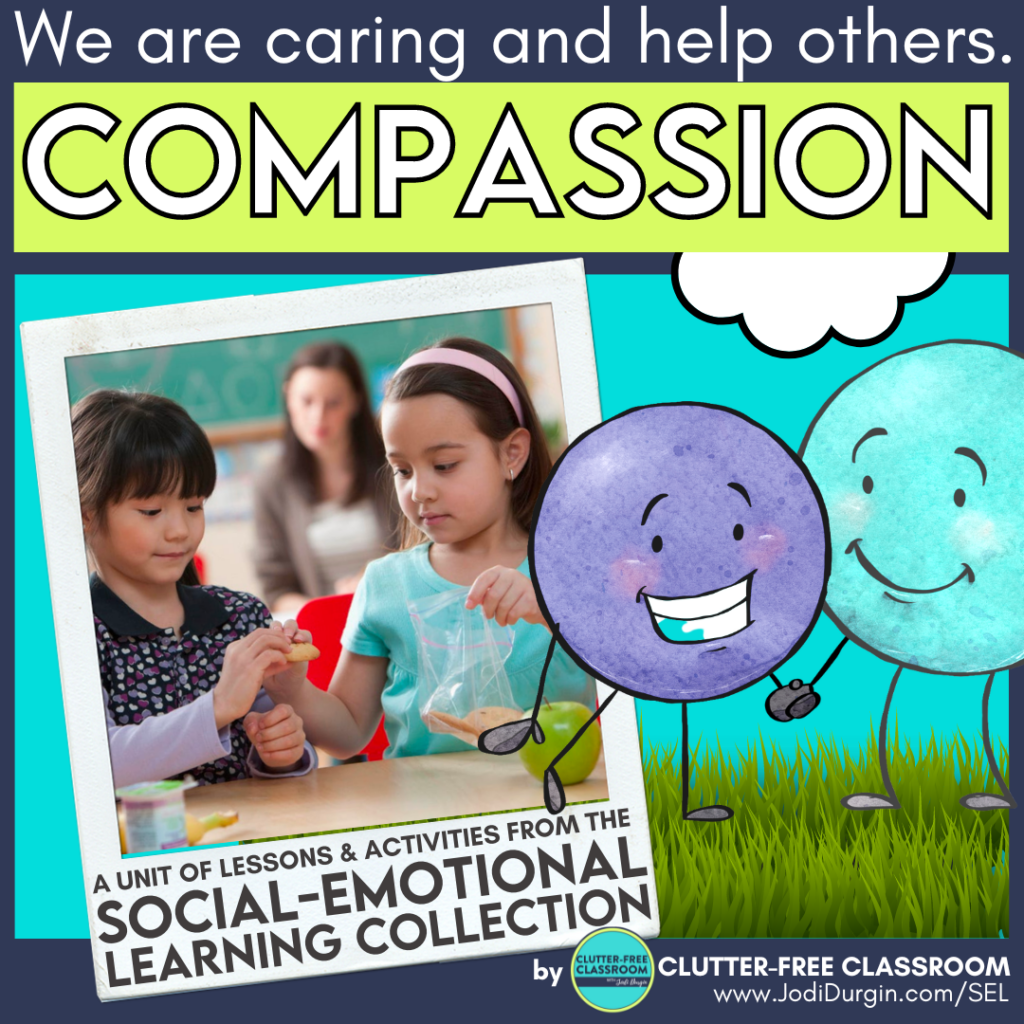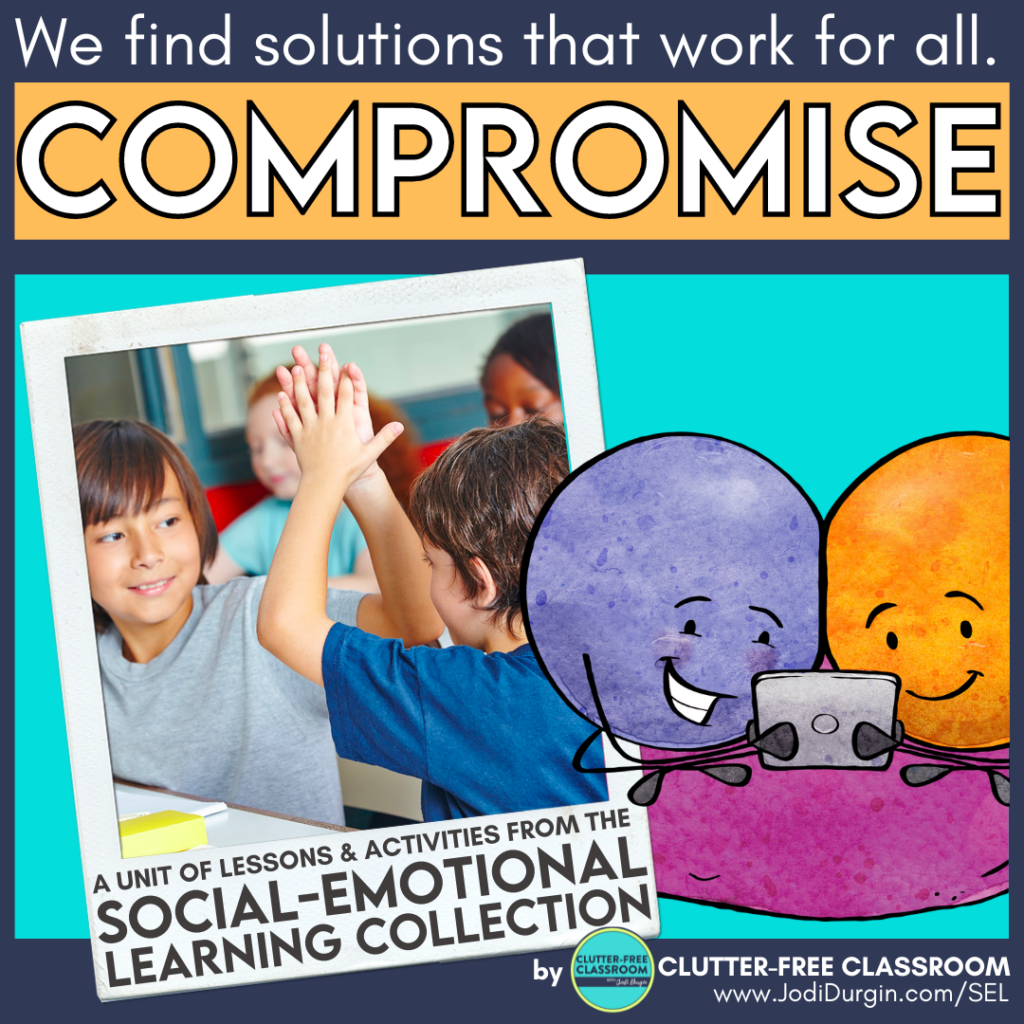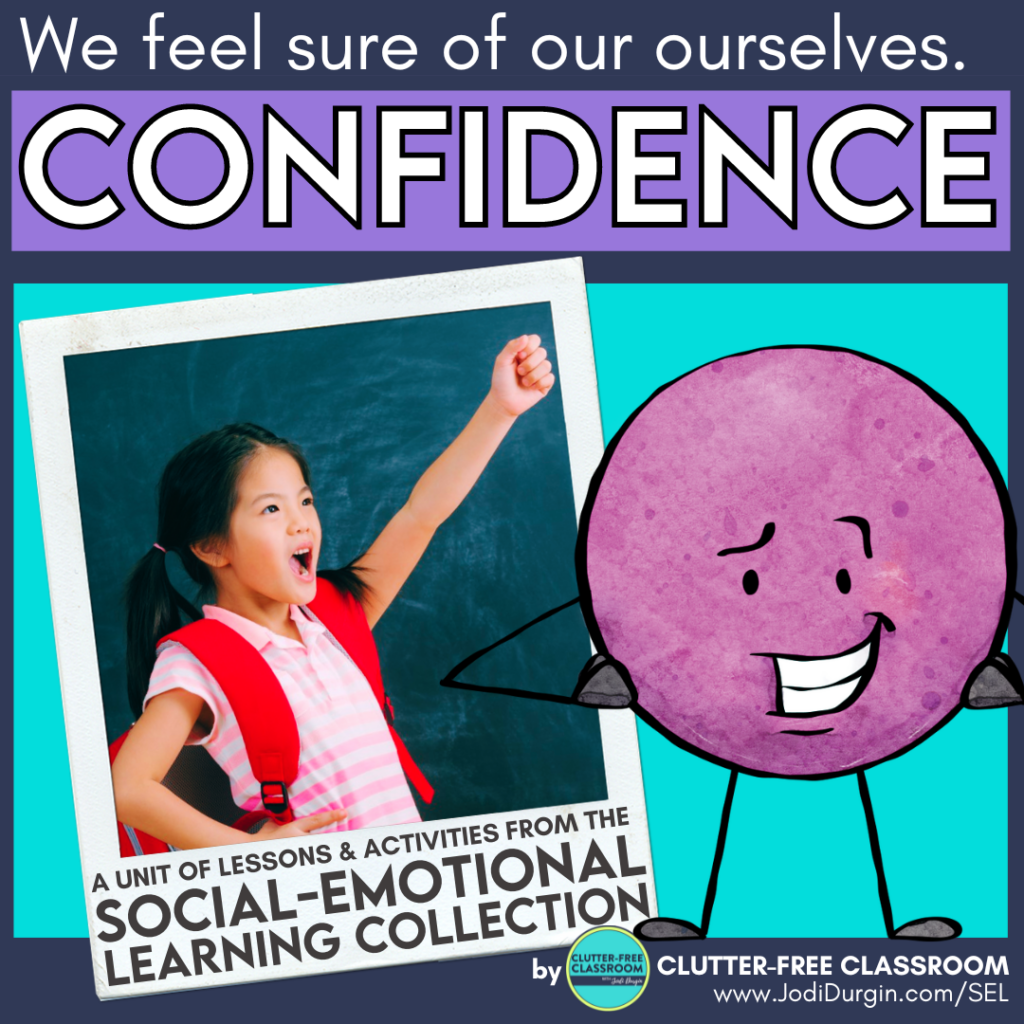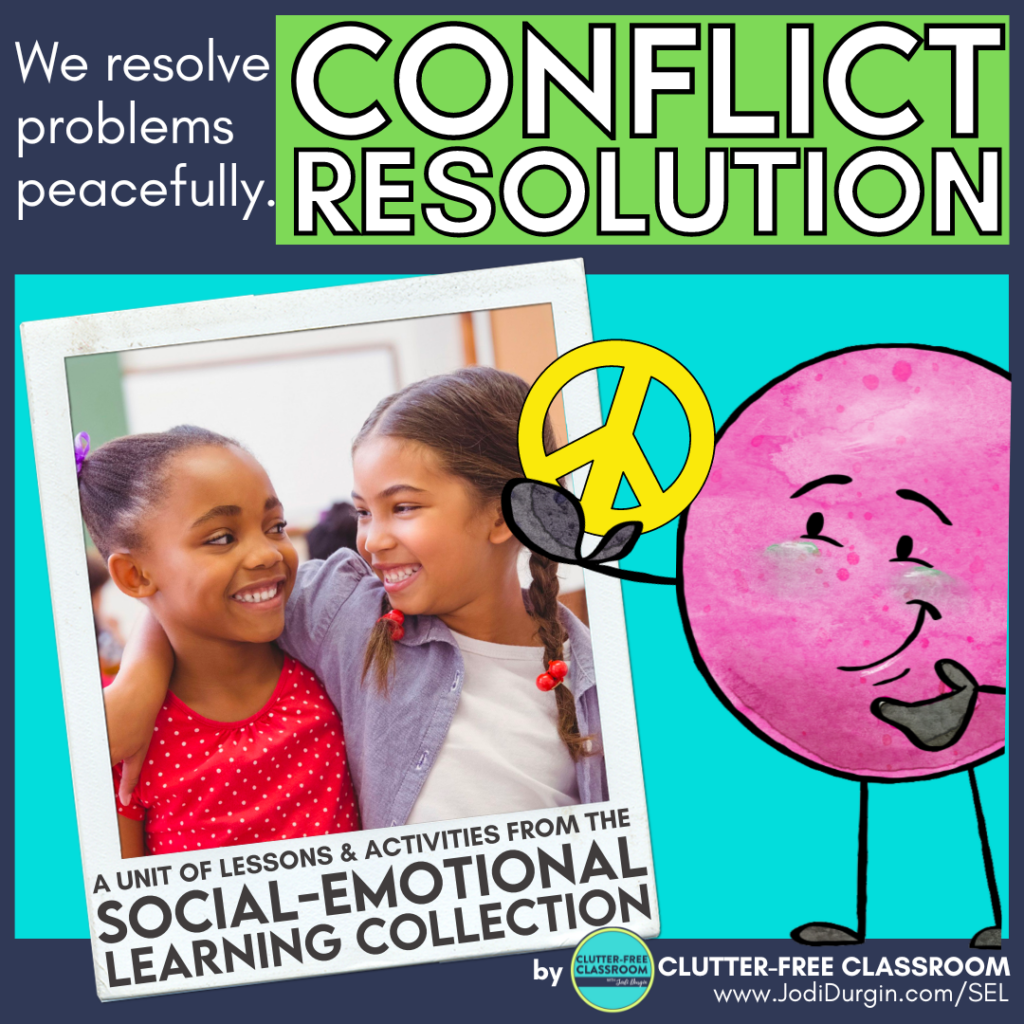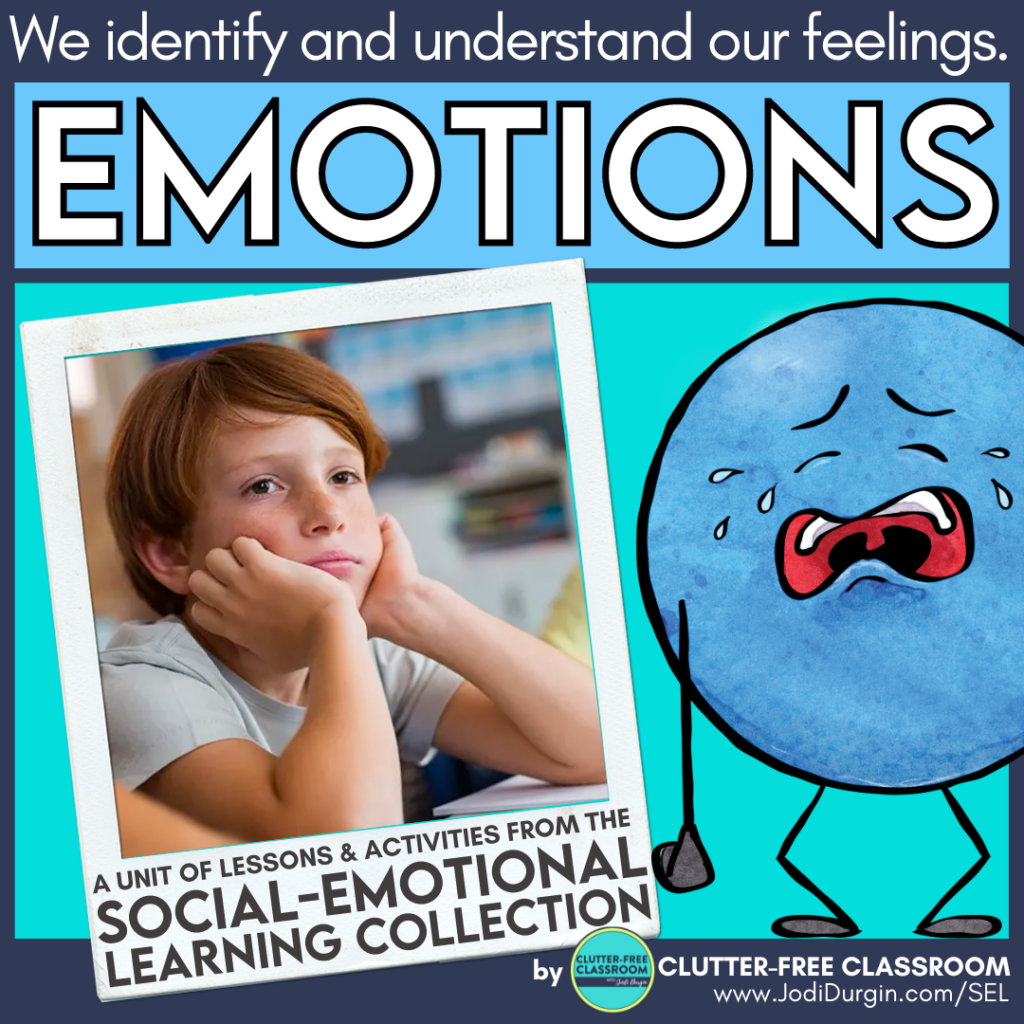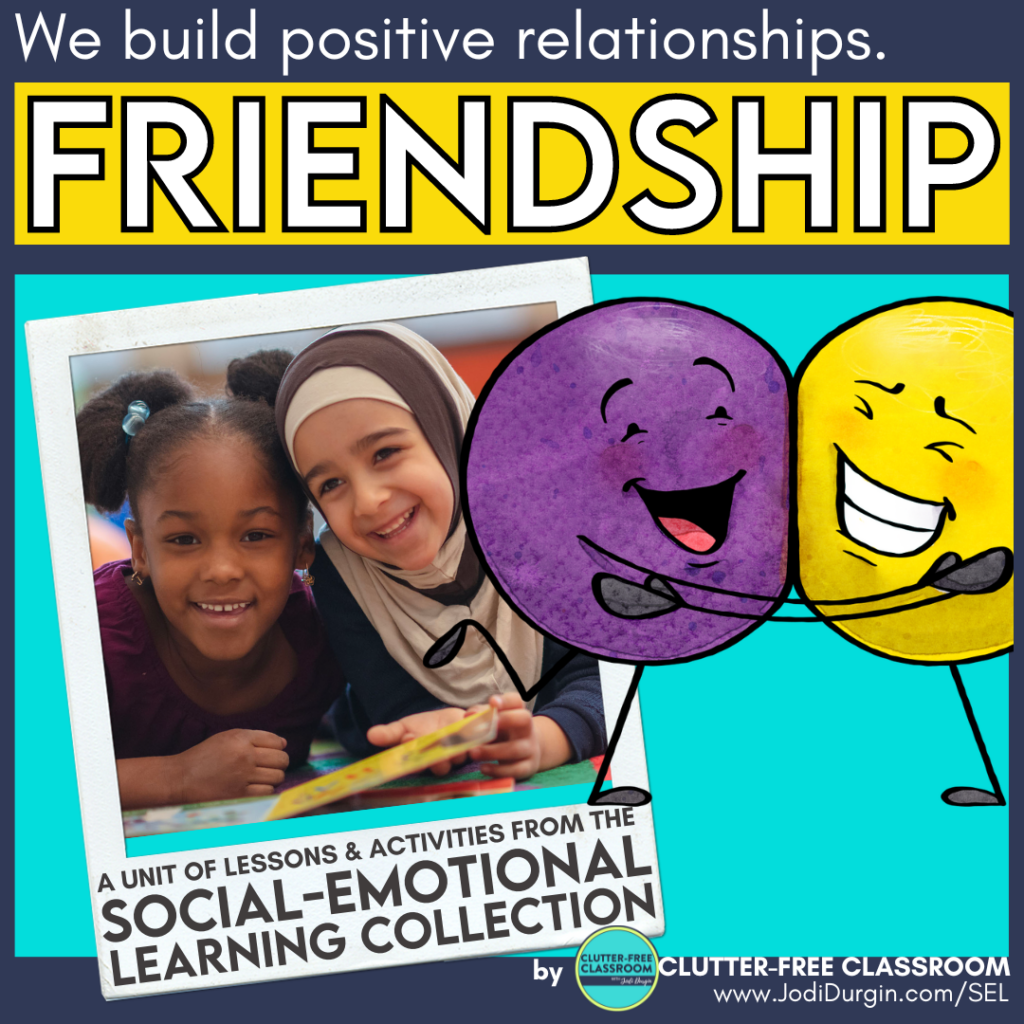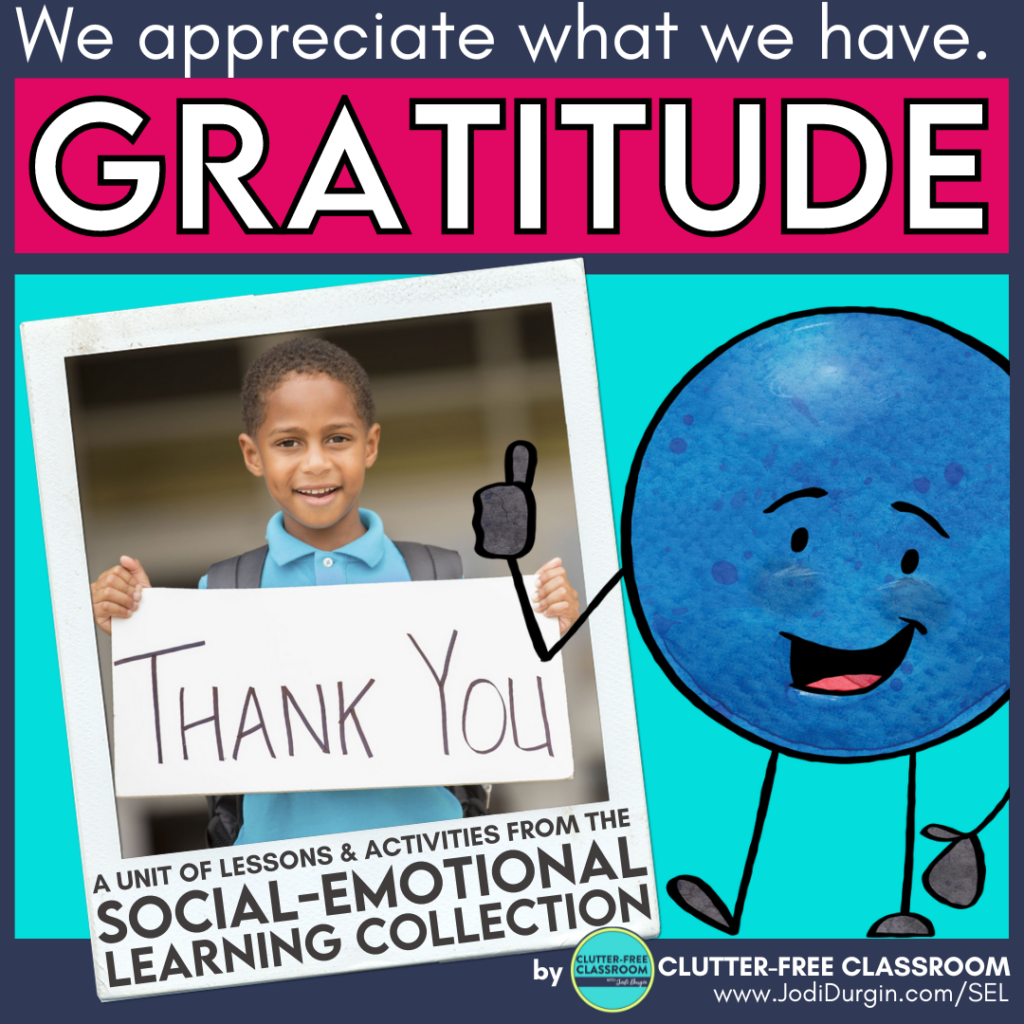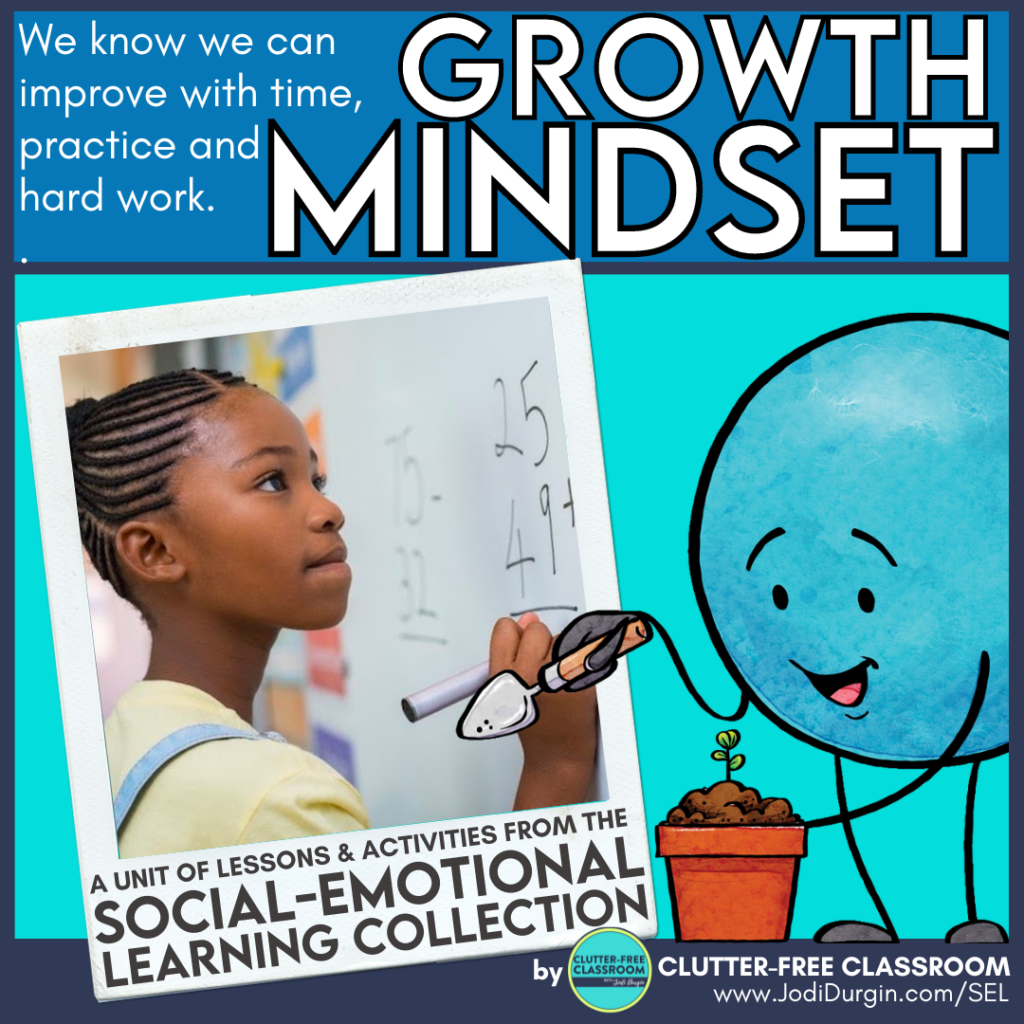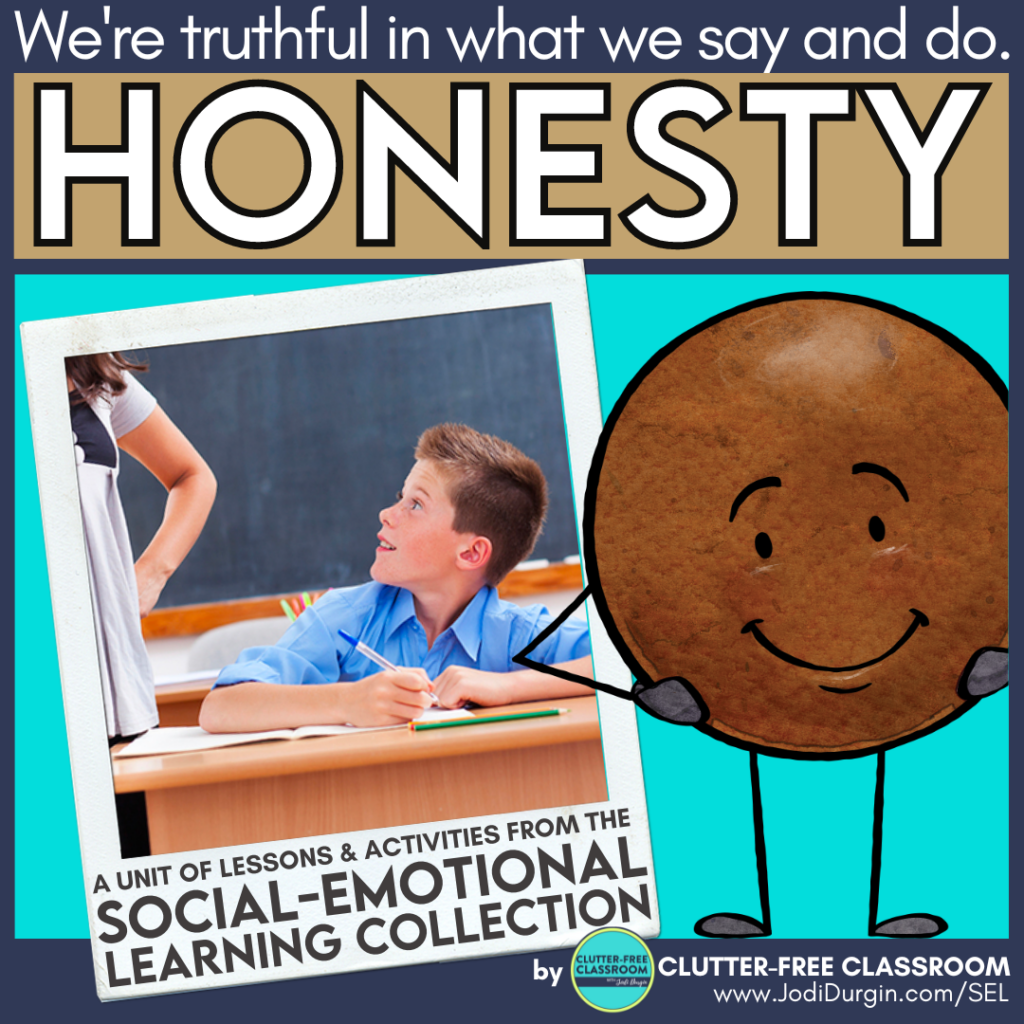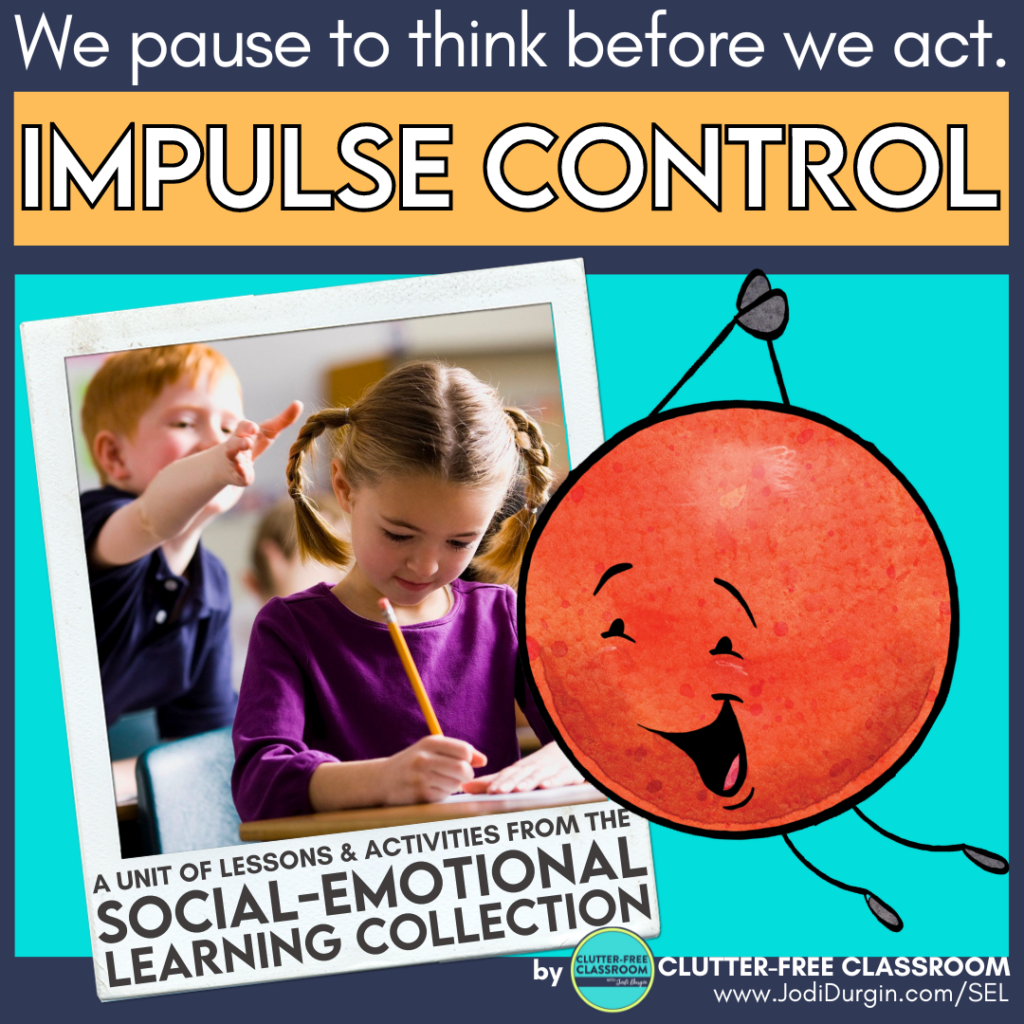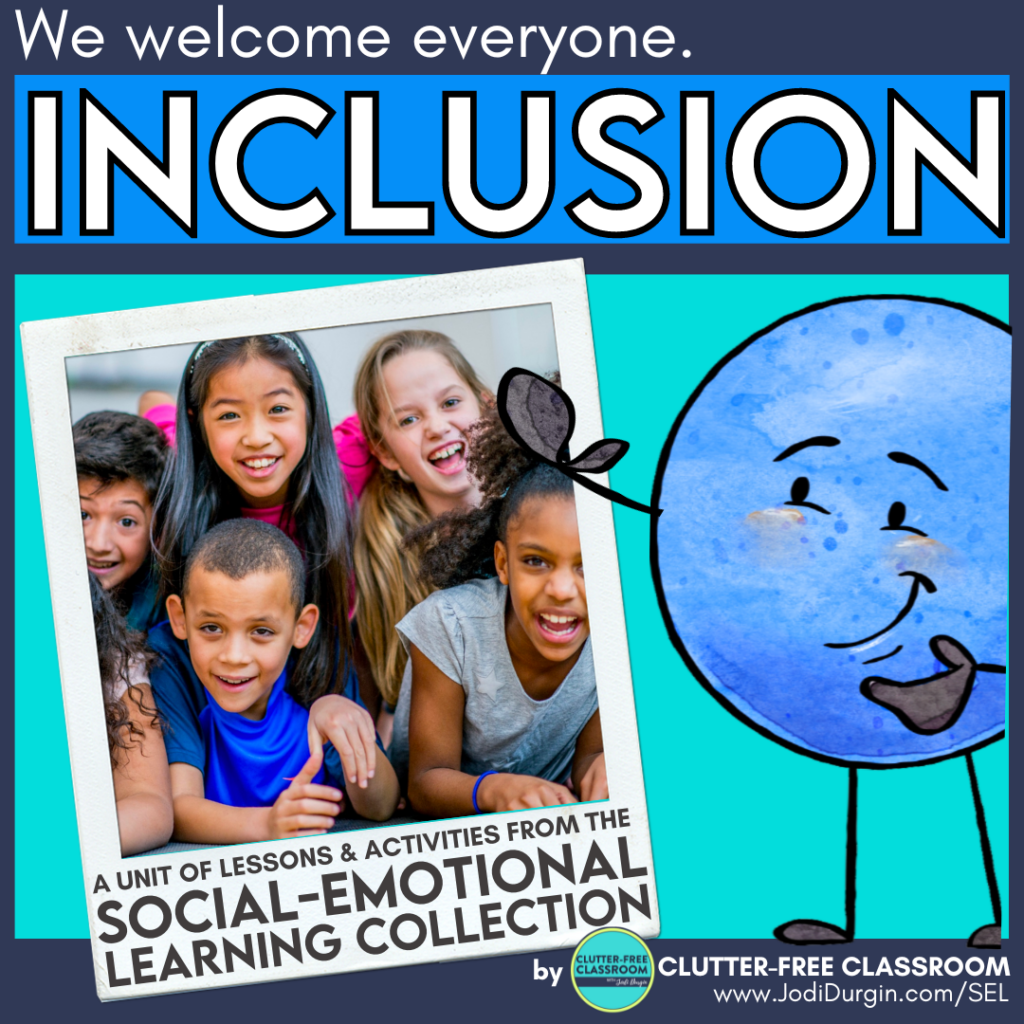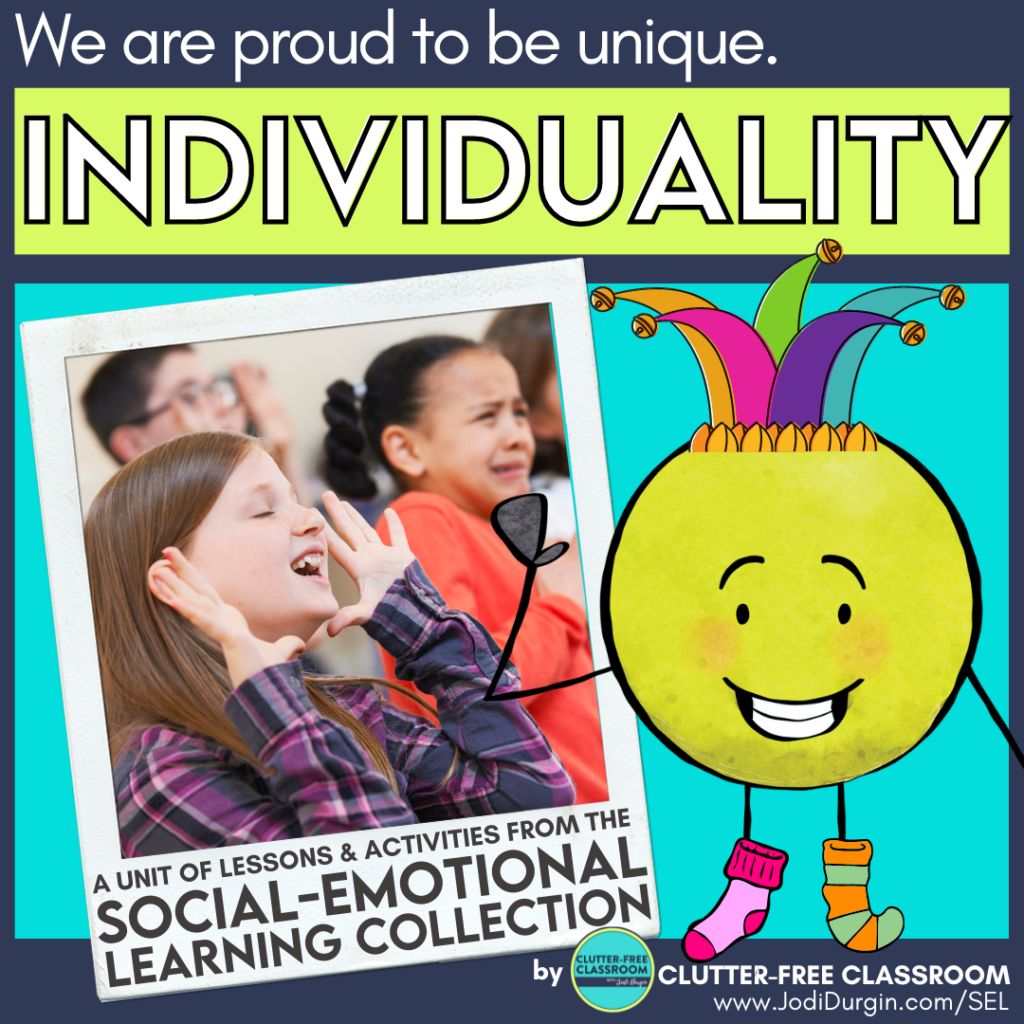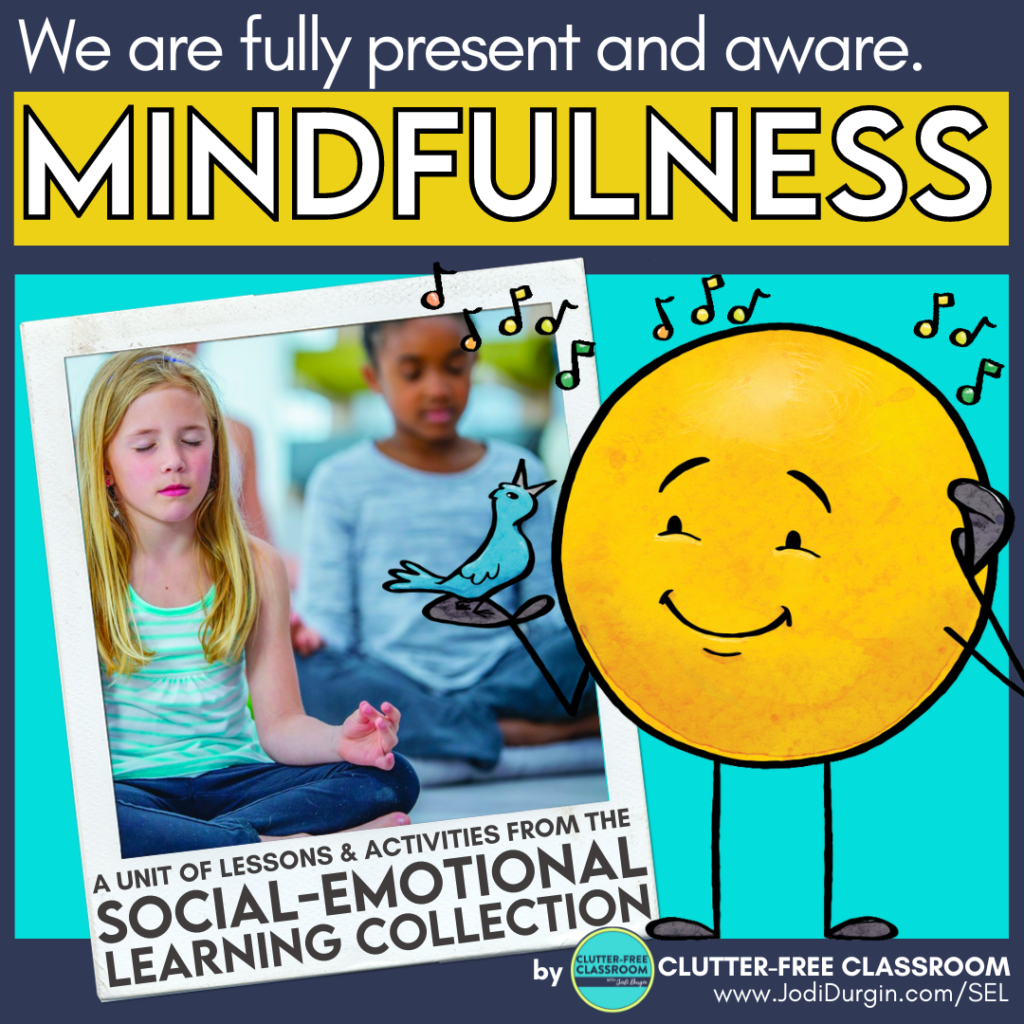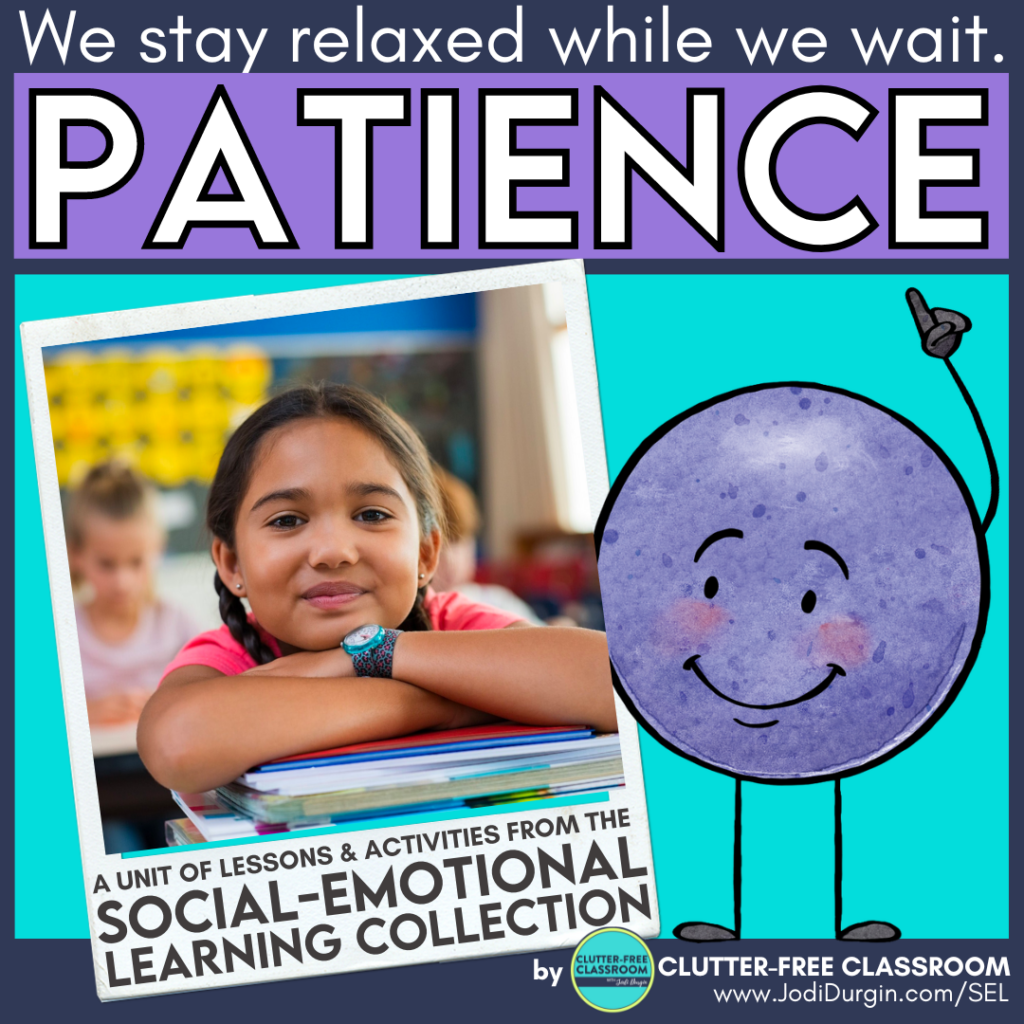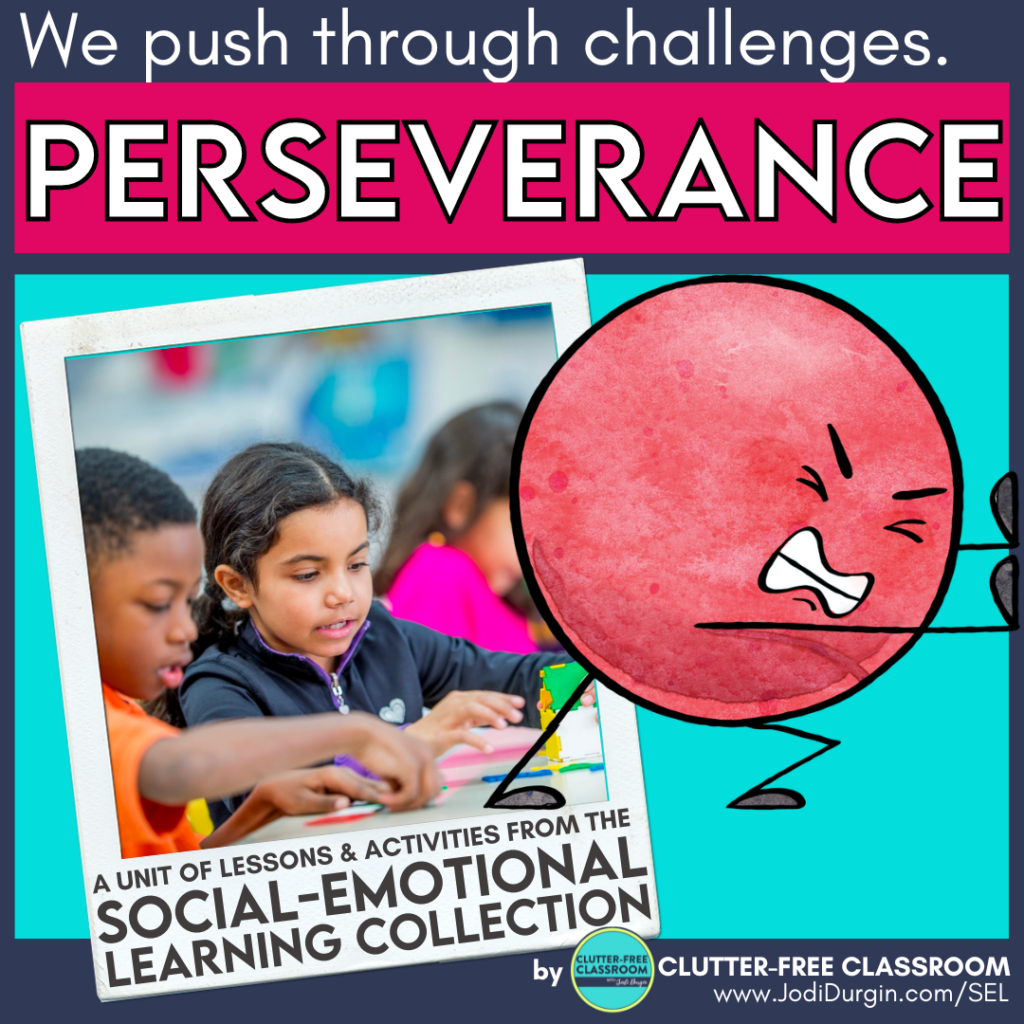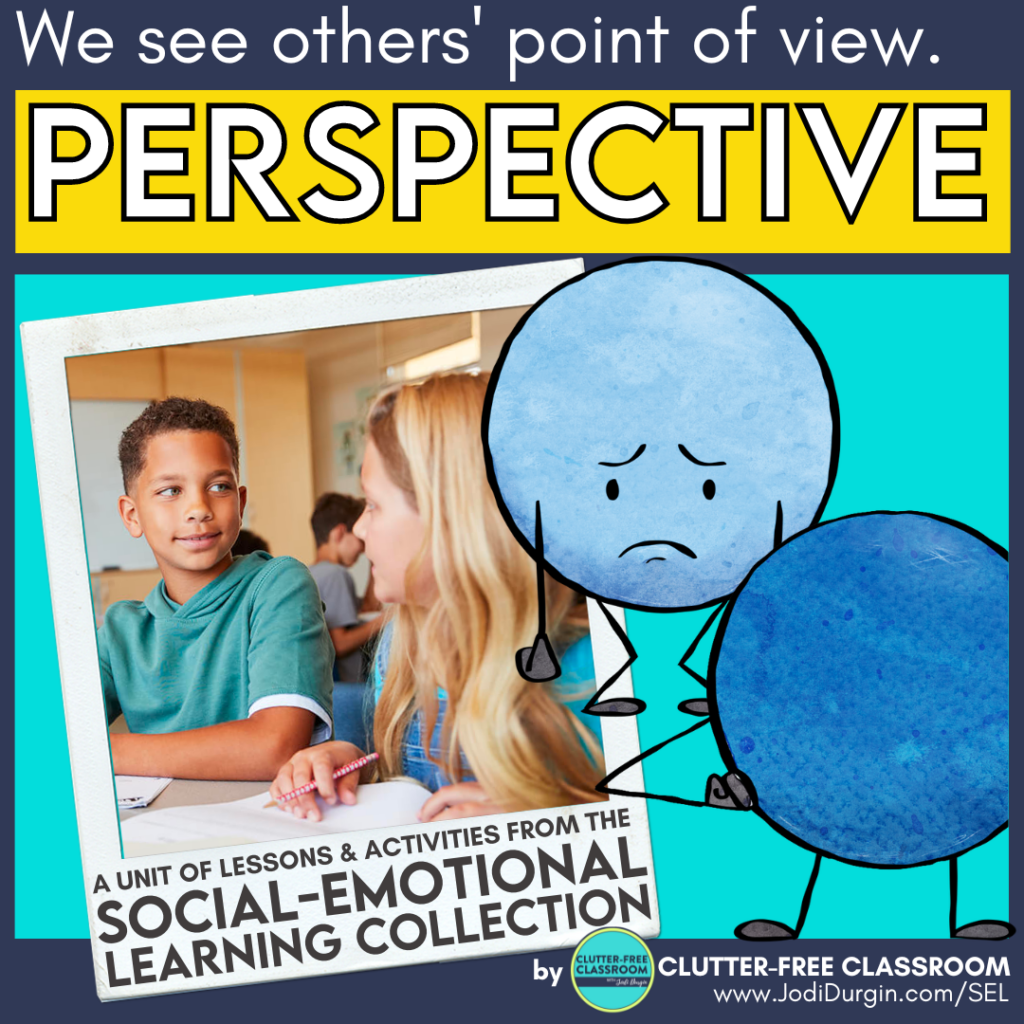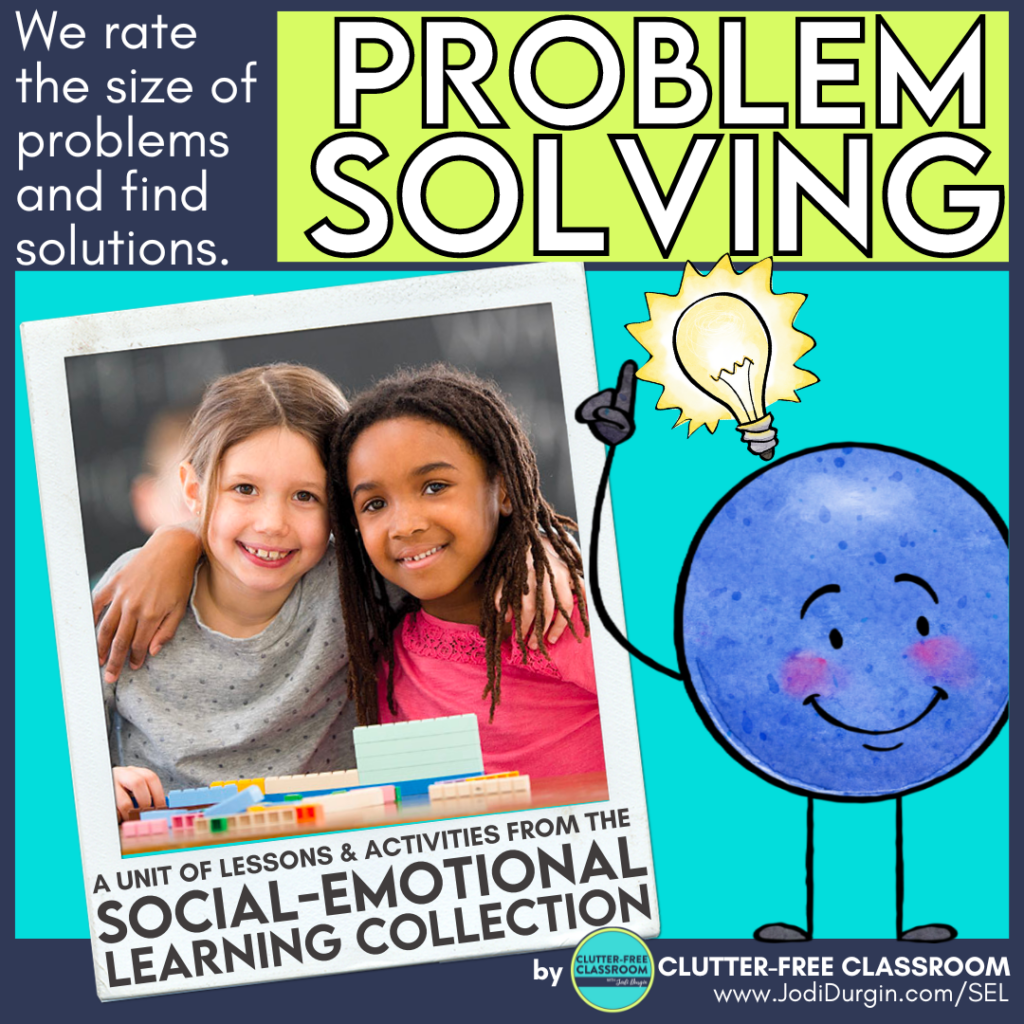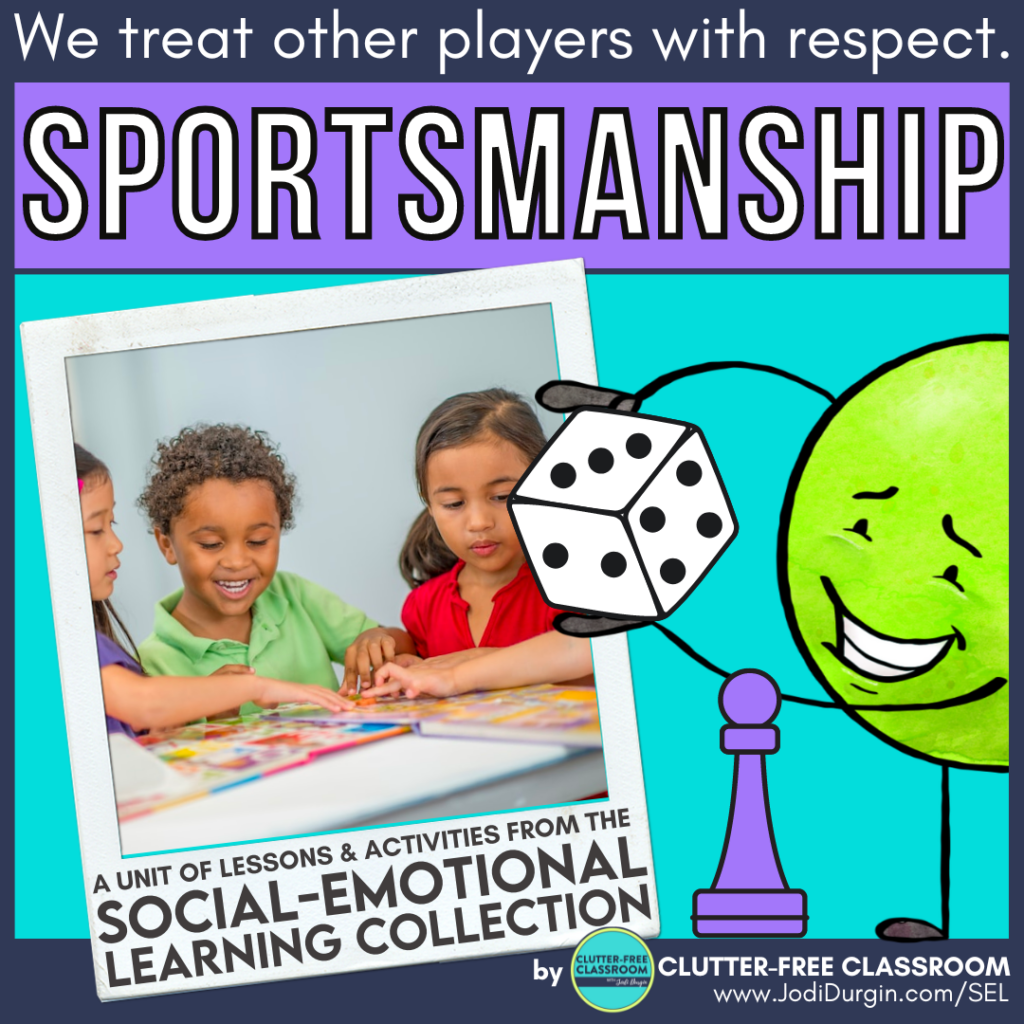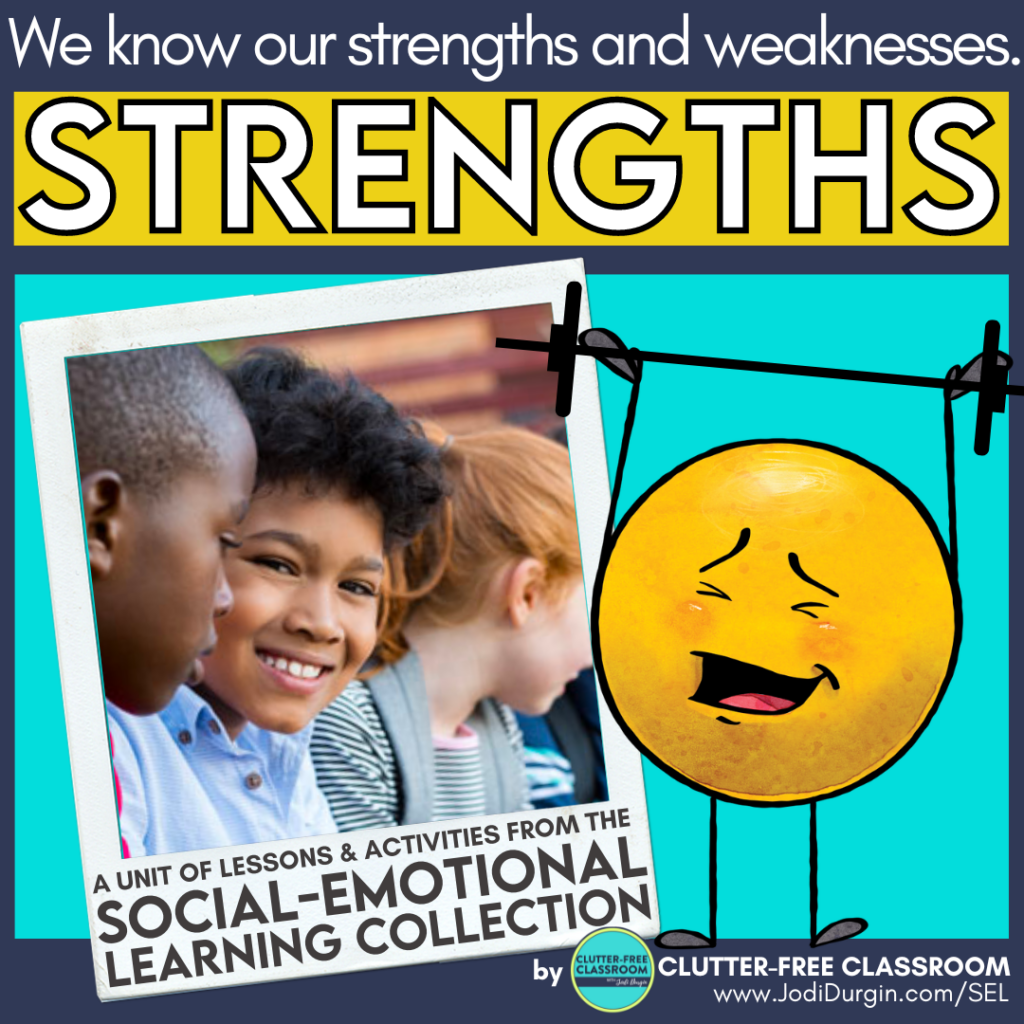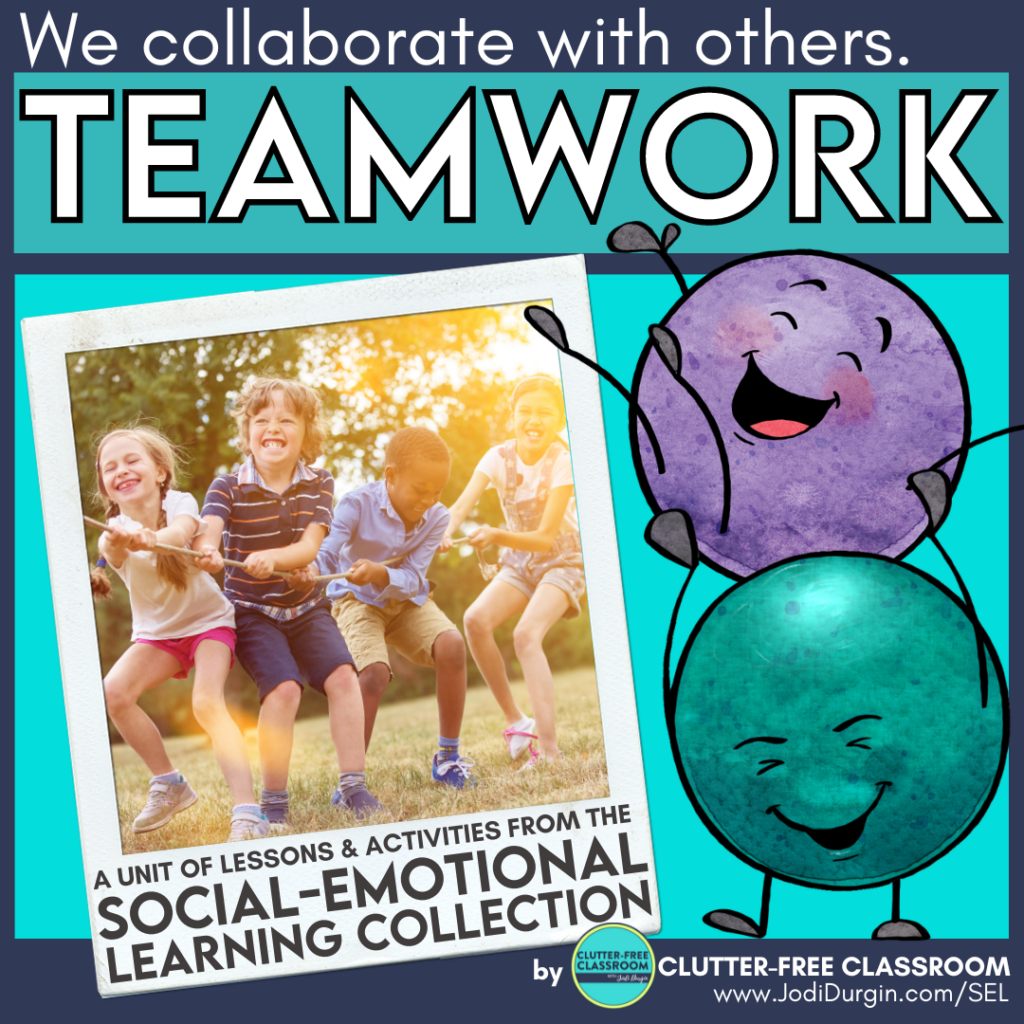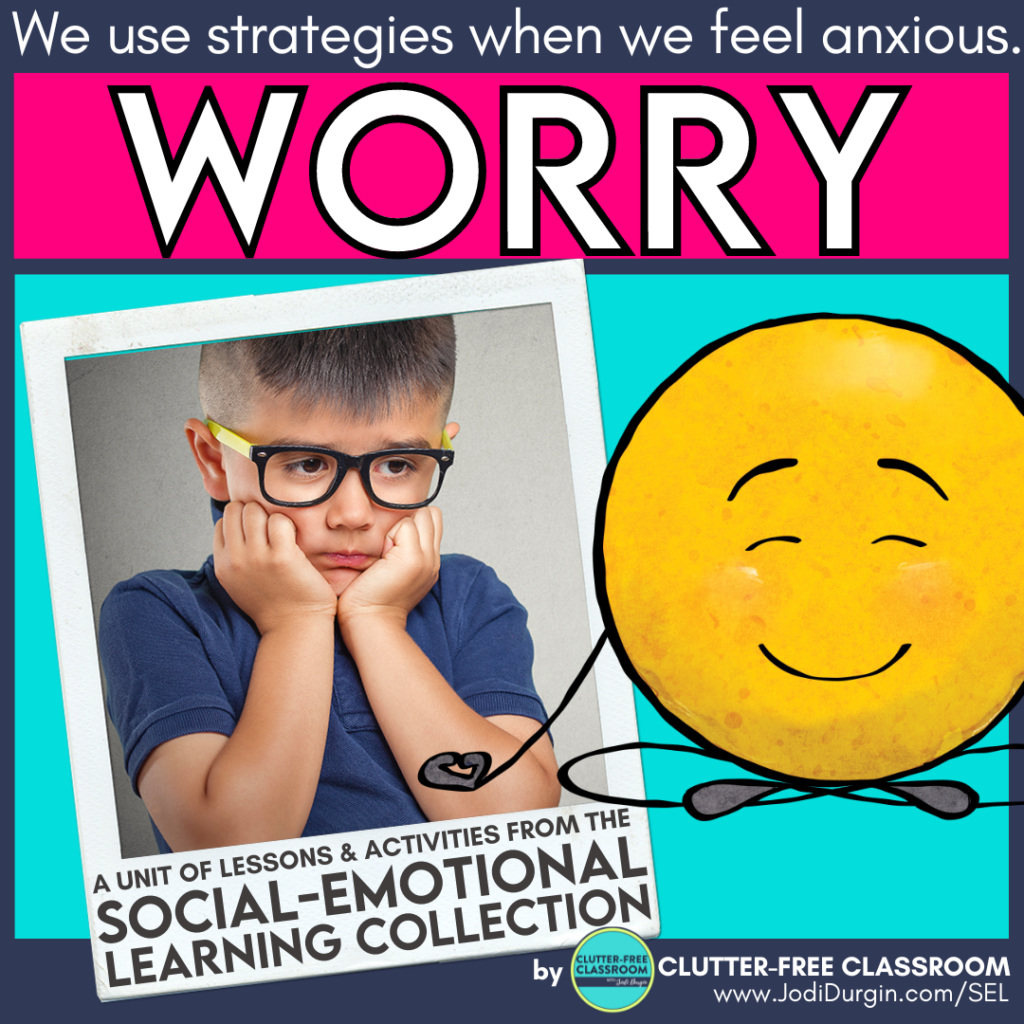Social emotional learning (SEL) is the process by which children understand and manage emotions, set and work towards positive goals, feel and show empathy for others, form and maintain positive relationships, and make responsible decisions. In the elementary classroom, this can look like students having social awareness and having understanding and compassion for others’ backgrounds, and making positive choices involving one’s behavior and emotions.
When thinking about how we teach SEL in the classroom, there are some guiding principles that we want to follow. These best practices help us deliver effective, meaningful, and engaging instruction surrounding social emotional learning skills. Check out the list of SEL best practices below!
10 Best Practices for SEL at the Elementary Level
Below are 10 best practices for teaching social emotional learning skills at the elementary level.
1. Set Up Your Classroom with SEL in Mind
The first on this list of best practices for teaching SEL is to design and set up your learning environment looking at it with a social emotional learning lens. You may want to create a classroom calming corner or designate a bulletin board for your weekly SEL focus topic. All of our SEL units include a set of bulletin board letters that you can use for bulletin board and anchor charts. Check out these other classroom setup ideas for a social emotional learning environment!
2. Incorporate Picture Book Read Alouds
We love teaching SEL using picture books! It’s a great way to introduce an social emotional learning topic and activate students’ background knowledge. All of our social emotional learning units include an introductory SEL lesson that uses a picture book that includes events in the story to demonstrate the social emotional learning topic you will be focusing on. This lesson introduces the social emotional learning topic using a picture book related to the topic and facilitates a class discussion.
Picture books are also a great way to help students see SEL skills being used in a real world context. All our our SEL units also include three literature-based lessons. These picture book companions use characters and events in a story to deepen students’ understanding of the social emotional learning topic you are focusing on. Each of the three book companions include a teacher lesson plan, text-based discussion questions, role play scenarios that are specific to the story, a writing activity and a list and drawing activity page. This teaches the SEL topic through engaging students in a picture book. The discussion questions are made to connect students to how the topic is portrayed in the book. Having students then role play what happened in the story and write about the topic further creates new learning connections.
3. Utilize Videos as an Instructional Tool
There are tons of great SEL videos for elementary students available for free on the internet! We curated lists of them for each of the social emotional learning topics we have units for. Some examples are growth mindset videos, mindfulness videos, kindness videos, goal setting videos, and conflict resolution videos.
4. Offer Student Choice When Possible
Whenever possible, offer students choice over their learning. Although this best practice is not specific to SEL, it’s especially important when working on social emotional learning skills. All of our units include a choice board with eight different activities students can pick from to further explore the social emotional learning topic and extend learning. While each activity is aligned with the focus topic, the options allow for students to use different learning modalities. Using a choice board allows students to take control of their learning and make decisions about how they want to further learn about the SEL topic. The activity options are organized around different learning modalities to accommodate the needs of all learners. Most students learn with all their modalities, but some students may have unusual strengths and weaknesses in particular modalities. Choice boards increase student engagement and allow for all children to be successful.
5. Explicitly Teach SEL Vocabulary
It’s important to equip students with the language they need to successfully implement the social emotional learning skills you teach. In our units, we include vocabulary cards and a word search to help you do this. There are 10 vocabulary cards with words related to the SEL topic. It is important for students to be able to see, hear and use relevant vocabulary while learning. Vocabulary words can help students develop understanding of the SEL topic and create connections through related words. The word search has 10 words related to the topic. The word search connects students to what they have been learning about the topic in a relaxed style. It also reinforces important vocabulary words by providing an opportunity to focus on each word and its spelling.
6. Encourage Families to Incorporate SEL at Home
We only have our students in our classroom so many hours in the day. In order to make a long-lasting and meaningful impact, we need to work collaboratively with families. Consider sending recommendations to families with regards to practicing SEL skills at home.
In each our units, we have a family letter that you can send home with students during each unit. It explains the social emotional learning topic and why it is important. The letter provides parents with several discussion prompts they can use to initiate a conversation with their child. It also shares some ways families can support students at home and extend their learning and social development in this area outside of the classroom. Family letters help create a home-to-school connection. They inform families what students are learning about the SEL concept and teach parents about the concept and how to support learning at home.
7. Integrate SEL with Everyday Instruction
Integrating SEL into everyday instruction is a great way to squeeze it into your already jam-packed school day. In our units, we include journal pages, writing papers, and an acrostic poem. These resources allow you to integrate social emotional learning into your literacy block. Any of those resources could be used as a writing center.
The journal pages have students using writing in three different ways. They describe a word or phrase, create a list, and answer a prompt. There are three different options for students. These are a great practice for applying what students are learning about the SEL topic to their writing. Using three different types of writing per page allows students to practice different types of writing.
The writing papers are blank writing paper featuring clipart aligned to the SEL topic. There are 2 versions included. The first is primary-ruled with a headline, midline and baseline for students who need fine motor support. The second uses typical lines appropriate for elementary students. Both versions have space to illustrate. Students can journal about what they have been learning about the SEL topic and respond to different scenarios and discussion questions.
The acrostic poem is based on the unit’s SEL topic. The benefit of using the acrostic poem is that it has students create connections through writing. Students are applying what they know about the SEL topic and writing a poem that describes and teaches others about it. Acrostic poems also provide teachers with an informal assessment of each students’ understanding of the SEL topic.
8. Facilitate Class Discussions
Students learn so much from participating in and listening to class-wide discussions surrounding a topic. Our units include five discussion prompts that are directly related to the SEL topic. These prompts were designed to have students further exploring the SEL topic. Discussion prompts get students thinking about the social emotional learning topic in new ways. Students also get to hear their peers’ thoughts on the topic. Hearing different points of views allows them to make connections with their peers and develop skills in understanding someone else’s perspective.
9. Provide Practice Opportunities
Students need time to practice any new skill they learn and this holds true with social emotional learning skills. There are tons of great social emotional development activities out there! Consider using scenario cards, games, and sorts to let students explore the SEL further. In our units, we have an “in-action” activity, a looks like sounds like activity, and an SEL Uno-type game.
The “in-action” activity is a page that involves students drawing a picture of a situation that features the SEL topic in action and then writing sentences about the topic. This open ended activity allows students to apply what they have been learning about the SEL topic in a picture and with words. The activity leaves space for them to show what they know.
The looks like sounds like T-chart is a brainstorm activity. Students brainstorm how they know the SEL topic is being used.
The SEL game is an Uno-style card game that explores the SEL concept. Students can discuss the SEL topic with a small group or partner. They can have fun while learning more about the social emotional learning concept. This is a highly engaging activity that will motivate students to learn more.
10. Make Connections to the Real World
When teaching about a social emotional learning topic, discuss real world situations and the importance of the SEL topic. Our units include scenario cards, real world situation activities, and an example and non-example sorting activity.
The scenario cards give students different situations that involve the use of the SEL topic. Using scenario cards help students think about how they would act in a situation where they would need to use the SEL topic. Teaching students how to make choices about an SEL topic when they are not currently experiencing it is the best time to teach students about it. Students who are actually in the situation are not as responsive to support and instruction.
The real world situation activities connect the SEL topic to events in the real world using a choice of two formats. The first is a flip book of ways to use the SEL topic in the classroom, at school, at home, and in their community. The second option has the same categories as the flip book but laid out in a one page document. These activities build understanding that the SEL topic that students are learning about can and should be used in all areas of their life. The topic isn’t only something they practice in their classroom or at home.
The example and non-example sort is a sorting activity that has a page of different scenarios that are either examples of using the SEL concept or examples of not using the SEL concept. Students evaluate a variety of scenarios and apply what they have learned about the social emotional learning topic when determining if it is an example or not.
In closing, we hope you found this list of best practices for teaching SEL helpful! Check out the SEL units below for teaching ideas and resources! You can click an image below to either get an individual unit or get click this link to get ALL 30 SEL units!

